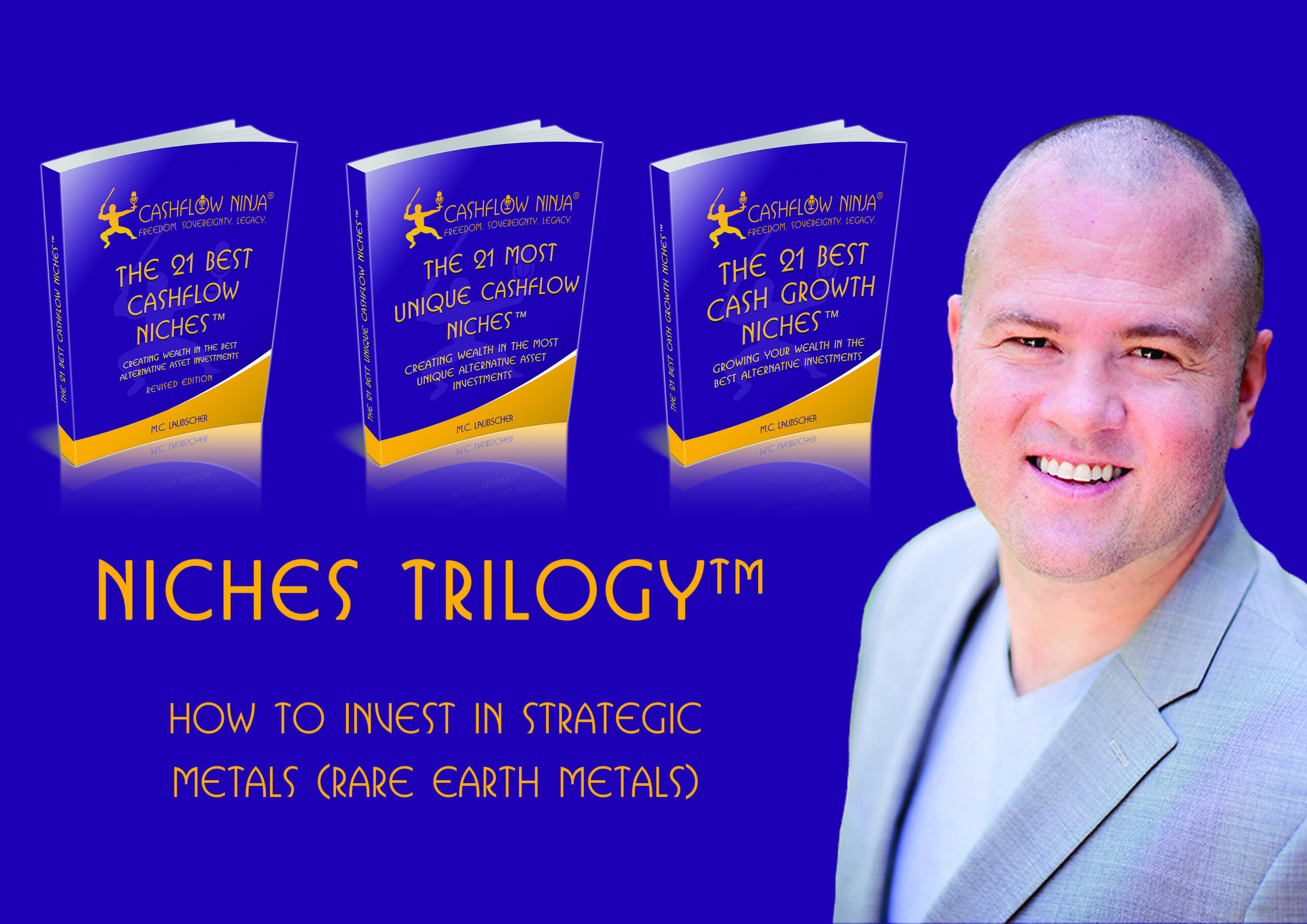
Rare earth metals, or rare earth elements, are a group of seventeen chemically similar metallic elements with unique magnetic, optical, and electrical properties. These elements are essential for producing numerous high-tech devices and green technologies, from smartphones to electric vehicles and wind turbines.
The term “rare earth metals” refers to the 15 lanthanide elements (lanthanum, cerium, praseodymium, neodymium, promethium, samarium, europium, gadolinium, terbium, dysprosium, holmium, erbium, thulium, ytterbium, and lutetium) and two additional elements, scandium and yttrium, which share similar chemical properties. Although these metals are not rare in terms of their overall abundance in the Earth’s crust, they are called “rare” because they are rarely found in concentrated forms economically viable to mine and process.
Rare earth metals can be found in various locations worldwide, but the largest deposits and mining operations are concentrated in a few specific regions.
The most significant sources of rare earth metals include:
China: Home to the world’s largest reserves of rare earth metals, China is responsible for more than 70% of global production. The Bayan Obo mine in Inner Mongolia is the largest rare earth mine globally.
Australia: The Mount Weld mine in Western Australia is the second-largest rare earth metal producer, with Lynas Corporation operating the mine and processing facility.
United States: The Mountain Pass mine in California is the only operating rare earth mine in the US, managed by MP Materials.
Other countries, such as Russia, Brazil, India, and Canada, also possess significant rare earth reserves and contribute to global production.
There is a significant concentration of rare earth metal production in a handful of countries, with China maintaining its dominant position.
What are Rare Earth Metals Used For?
Due to their unique properties, rare earth metals are crucial in various modern applications. In the realm of electronics, they’re indispensable for producing smartphones, computers, and other devices. Powerful magnets in hard drives and speakers rely on neodymium and praseodymium, while europium, terbium, and yttrium are essential for display screens.
The clean energy sector also heavily depends on these metals; wind turbines and electric vehicle motors, for instance, use neodymium for their magnets.
In defense, rare earth metals are critical components in technologies like guidance systems and night-vision goggles. In the medical field, gadolinium is used in MRI scans, and various medical lasers employ holmium, erbium, and thulium.
Aerospace applications, too, utilize rare earth metals like scandium in lightweight aluminum alloys and samarium and neodymium in other components.
The demand for rare earth metals is fueled by technological advancements, the global transition to clean energy, and the needs of the defense and aerospace industries. The evolution of technology necessitates these metals for powerful magnets, batteries, and display screens in a range of electronic devices.
The shift towards renewable energy sources, driven by climate change concerns and clean energy policies, has spiked the demand for metals like neodymium and dysprosium in high-performance magnets used in electric vehicles and wind turbines.
The focus on national security and space exploration in defense and aerospace has heightened the need for these critical materials. Medical technologies also rely on rare earth metals, a growing demand with the aging global population and the need for advanced treatments.
Government policies and efforts to stockpile rare earth metals for strategic purposes further push this demand, as does the rapid urbanization and infrastructure development in emerging economies.
The construction and expansion of these countries’ transportation systems, energy grids, and telecommunications infrastructures require rare earth metals, adding to the global demand.
This widespread and growing reliance on rare earth metals across various sectors underscores their significance in modern applications and the global economy.
Why Invest In Rare Earth Metals?
Investors’ growing interest in rare earth metals stems from their unique and escalating importance in various high-tech applications. These elements are crucial in modern technologies like smartphones, electric vehicles, wind turbines, and advanced electronic devices. As the demand for these technologies increases, so does the need for rare earth metals, making them an attractive investment.
One of the key drivers behind this appeal is the concentration of the global supply chain. With China as the predominant supplier, a few countries control a significant portion of the rare earth metals market. This concentration creates supply vulnerabilities and geopolitical risks and contributes to price volatility, presenting unique investment opportunities.
Moreover, rare earth metals are vital in the transition to clean energy. They are essential in manufacturing powerful magnets in wind turbines and electric vehicle motors. The demand for these metals will likely surge as the world moves towards reducing carbon emissions. The scarcity of substitutes for many rare earth metals due to their unique properties further underlines their irreplaceable role in various applications and their long-term value.
Another factor contributing to their attractiveness is the increasing prices of these metals, driven by the factors above. This trend offers investors a commodity with strong potential for price appreciation. Investing in rare earth metals can diversify your portfolio, as their market dynamics are distinct from traditional investments like stocks, bonds, or other commodities.
For those interested in speculative opportunities, the rare earth market, with its relatively small size, is susceptible to rapid price shifts driven by policy changes, technological advancements, or supply disruptions. This aspect can particularly appeal to investors looking for speculative investments with high potential. Overall, the unique characteristics and growing importance of rare earth metals in various high-tech and clean energy applications make them an increasingly intriguing option for investors.
How To Grow Cash
Given their increasing importance in technology and renewable energy sectors, investing in rare earth metals presents a promising opportunity for capital growth. One straightforward approach is the direct purchase and sale of physical rare earth metals, where you buy these metals and store them, hoping to sell them at a higher price as demand grows.
This direct investment strategy is the one that I recommend.
Alternatively, you could invest in stocks of companies that mine or process rare earth metals. As the demand for these metals rises, these companies become more profitable, potentially boosting their stock prices.
You can also invest in venture capital investments in mining and exploration projects focused on discovering and developing new rare earth mining sites. This represents a high-risk but potentially high-reward approach. Such investments can offer substantial returns if these ventures succeed in finding and extracting valuable rare earth deposits.
How To Lose Money
Investing in rare earth metals, while offering potential gains, also comes with risks that can lead to financial losses. One significant risk is the market’s price volatility. Prices of rare earth metals and the stocks of companies involved in their production can fluctuate due to factors like supply-demand imbalances, geopolitical tensions, and changing government policies. Such volatility can lead to substantial losses if prices fall.
Geopolitical risks are also prominent, especially given the concentration of rare earth metal production in a few countries, notably China. Trade disputes or export restrictions stemming from geopolitical issues can disrupt the supply chain and negatively impact investments in this sector.
Regulatory changes pose another risk. As governments become increasingly aware of the environmental and social impacts of rare earth metal mining and processing, stricter regulations or environmental policies could raise operating costs for companies in the sector. This could result in lower profitability and a decline in stock values.
Investing in individual companies within the rare earth metals sector exposes investors to company-specific risks. Poor management decisions, operational disruptions, or financial difficulties within a company can lead to a drop in its stock price, potentially causing losses for investors.
Currency fluctuations add another layer of complexity. Investments in foreign companies or commodities are subject to the risk of currency value changes. If the currency of the country where rare earth metals are produced or where the company is based depreciates against the investor’s home currency, the value of the investment may decrease.
Lastly, the challenge of market timing must be addressed. Attempting to buy low and sell high is a strategy that takes time and effort. Investors who buy at the market’s peak and sell during a downturn may incur losses. These risks highlight the need for careful consideration and thorough research when investing in the rare earth metals sector.
Positives and Negatives Of Rare Earth Metals
Positives:
Growth Potential: With the increasing demand for rare earth metals due to technological advancements, clean energy initiatives, and other applications, the market for these metals is expected to grow. Investors can benefit from the long-term growth of the industry.
Diversification: Investing in rare earth metals can diversify your portfolio by offering exposure to a unique sector with distinct drivers, separate from traditional investments such as stocks and bonds.
Supply Constraints: The limited and concentrated supply of rare earth metals and geopolitical tensions can result in supply disruptions and price spikes. Investors can profit from price increases if they have exposure to companies involved in producing or processing rare earth metals.
Green Initiatives: As global awareness of environmental issues increases, there is a growing focus on clean energy technologies. Rare earth metals are essential for many green technologies, and investing in this sector aligns with these global initiatives.
Negatives:
Market Volatility: The rare earth metal market is known for its price volatility, influenced by supply disruptions, changing government policies, and geopolitical tensions. This can make investments in this sector risky and challenging to predict.
Geopolitical Risks: The global supply of rare earth metals is highly concentrated, with China dominating production. This concentration of supply can result in geopolitical tensions and trade disputes that can impact the rare earth metal market and related investments.
Environmental and Social Concerns: The mining and processing of rare earth metals can have significant environmental and social impacts, including water pollution, soil contamination, and negative effects on local communities. These concerns can lead to stricter regulations, higher costs, and potential reputational risks for companies operating in this sector.
Limited Investment Options: Direct investment in rare earth metals can be challenging for individual investors, as physical ownership and storage of these metals are impractical. While some publicly traded companies are involved in mining and processing rare earth metals, investment options are limited compared to more established sectors.
Investment Opportunity Filter™
The Investment Opportunity Filter™ evaluates an investment opportunity based on cashflow, tax benefits, appreciation, and the leverage it provides.
Rare earth metals score a 2/4 with The Investment Opportunity Filter™
Rare earth metals investments can significantly increase in value, and it also allows for leveraging of skill sets, capabilities, networks, and capital of others with you buying and storing your rare earth metals with a third party.
If you are interested in securely buying and storing Rare Earth Metals, you can access our Rare Earth Metals at www.cashflowninja.com/rem.
Download all the Niches Trilogy Books:
The 21 Best Cashflow Niches
Digital: https://www.
Audio: https://podcasters.spotify.
The 21 Most Unique Cashflow Niches
Digital: https://www.
Audio: https://podcasters.spotify.
The 21 Best Cash Growth Niches
Digital: https://www.
Audio: https://podcasters.spotify.
Listen To Cashflow Ninja Podcasts:
Cashflow Ninja
https://podcasters.spotify.
Cashflow Investing Secrets
https://podcasters.spotify.
Cashflow Ninja Banking
https://podcasters.spotify.
Share This
Related

840: Chris Rawley: How To Invest In Livestock
My guest in this episode is Chris Rawley. Chris is a retired Navy Reserve Captain, founded Harvest Returns in 2016 to democratize agricultural investments. During his 30-year military career, Rawley served in leadership roles across naval, expeditionary, and joint special operations units, deploying to regions such as Afghanistan, Iraq, Africa, the Middle East, and the…

839: Louis O’Connor: The Exciting Trends For Rare Earth Metals Right Now
My guest in this episode is Louis O’ Connor. Louis is the Founder, and Principal of Strategic Metals Invest. We are the only industry supplier in the world to offer private investors the option to purchase and profit from owning Strategic Metals. The investment play is exactly the same paradigm as investing in Precious Metals,…

838: Michael Cobb: How To Buy Your Home Overseas And Get It Right The First Time
Our guest today is Mike Cobb, co-founder & CEO of ECI Development and President of Gran Pacifica. Named among the “100 Outstanding CEOs in Central America” by Mercados & Tendencias, Mike left a successful career in the computer industry to pursue opportunities in the emerging real estate markets of Central America. In 1996, he co-founded…
